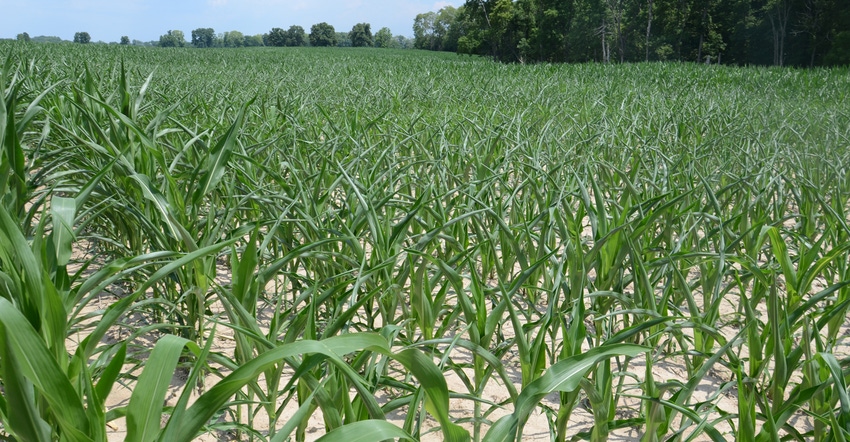July 29, 2020

Most green plants have microscopic “windows” called stomata that open and close as needed by the plants. These windows are used to exchange gases from the atmosphere. During the process of photosynthesis, plants absorb carbon dioxide from the air through stomata and water from the soil through roots.
With the help of sunlight and heat as their energy source, they use a recipe that combines the ingredients of carbon dioxide, water, nitrogen, phosphate, potash and micronutrients from the soil to create sugars, starches, oils, proteins, cellulose, lignin and thousands of other compounds.
Now that you know how this miraculous process should work, you can understand why plants adjust when conditions are less than ideal. Remember that plant breeders and agronomists work with plants in less-than-perfect conditions all the time.
Plants also use these windows as a defense mechanism against heat and drought. When corn leaves curl up during very hot periods of the day, they’re closing stomata to reduce transpiration and respiration rate. Plants under stress aren’t very productive.
Normally, during the day, plants absorb carbon from carbon dioxide and release oxygen back through stomata. During the night, plants respire and don’t release oxygen into the atmosphere. Also, plants slow down and deposit products of photosynthesis where needed at night.
During vegetative growth, these products are used to build plant leaves, stalks, tassels and ears. After pollination is complete, sugars, starches, oils and proteins are deposited in kernels. Kernels are the offspring of the corn plant. Like all organisms in the world, corn plants have only one objective: Produce as many viable progeny as possible.
Heat and drought
Higher temperatures speed up biological processes of plants and shorten their lives. That’s why green bananas mature faster in the summer. Studies show that corn performs best at moderate temperatures and doesn’t produce as well when it’s too hot.
Why is that? During very hot days and hot nights, corn uses up some biomass in wasteful respiration. The respiration rate increases rapidly as temperatures increase, resulting in loss of carbohydrates manufactured during the day. This results in lower yields. Ideally, corn likes about 86 degrees F during the day and 65 to 70 degrees at night.
Drought can bring stress, too. During periods of intense stress, rate of photosynthesis decreases. If this happens during grain fill, plants redirect stored photosynthates to the grain at the expense of leaves and stalks. The plant sacrifices its other parts to meet the needs of the growing kernels.
This can result in weakened stalks and lodging. A stalk pinch test may be necessary to determine which fields should be harvested first. The black layer may form earlier in these fields, resulting in smaller kernels and lower yields.
Plant breeders have made great strides, but they can only do so much when it comes to developing genetics that perform better under stress. Your role is to reduce stress as much as possible. Unless you have irrigation, you may not be able to reduce drought stress directly.
However, adjusting farming methods to minimize soil compaction, for example, is one way you can lessen the impact of hot, dry weather. Understanding the needs of corn plants will help you grow higher-yielding crops.
Nanda is director of genetics for Seed Genetics Direct, Jeffersonville, Ohio. Email him at [email protected] or call 317-910-9876.
About the Author(s)
You May Also Like






